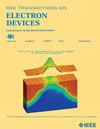宽禁带半导体器件级热管理技术的最新进展
IF 2.9
2区 工程技术
Q2 ENGINEERING, ELECTRICAL & ELECTRONIC
引用次数: 0
摘要
与硅基器件相比,宽带隙(WBG)和超宽带隙(UWBG)半导体器件具有更高的击穿电压和更低的导通电阻等性能,在电能转换和通信领域具有很强的竞争力。特别是GaN作为wwbg半导体的代表材料之一,已进入产业化阶段,Ga2O3等新一代UWBG半导体已成为近十年来电力电子应用的热门研究热点。然而,这些先进半导体器件面临的主要挑战是热管理,特别是在高功率应用中,这会导致电气性能和长期可靠性的严重下降。因此,迫切需要有效的热管理技术。本文全面总结了WBG和UWBG半导体器件级热管理技术的最新进展,从内部器件结构优化到一系列增强热扩散的外部策略。这些策略包括通过器件架构优化、衬底减薄、高导热衬底粘合和覆盖、倒装芯片封装、主动微通道冷却方法和瞬态热管理技术来增强内部散热。最后,我们讨论了热管理技术的现有技术挑战,潜在的解决方案和进一步的发展机会,旨在解决关键的散热问题,以促进wwbg和UWBG半导体的进一步工业化。本文章由计算机程序翻译,如有差异,请以英文原文为准。
Recent Advances in Device-Level Thermal Management Technologies for Wide Bandgap Semiconductor: A Review
Wide bandgap (WBG) and ultra-WBG (UWBG) semiconductor devices exhibit superior performance with higher breakdown voltage and lower on-resistance compared to Si-based devices, rendering them highly competitive in the field of electric energy conversion and communication. Especially, GaN, as one of the representative materials in WBG semiconductors, has progressed to the stage of industrial realization, and the new generation of UWBG semiconductors such as Ga2O3 has become a popular research focus in the last decade for power electronics applications. However, the primary challenge faced by these advanced semiconductor devices is thermal management, particularly in high-power application, which leads to a serious degradation in electrical performance and long-term reliability. Therefore, there is an urgent need for effective thermal management technologies. This review comprehensively summarizes recent advances in device-level thermal management techniques for WBG and UWBG semiconductors, ranging from internal device structure optimization to a series of external strategies for enhancing thermal diffusion. These strategies include enhancing the internal thermal dissipation through device architecture optimization, substrate thinning, high thermal conductivity substrate bonding and coverage, flip chip package, active method of microchannel cooling, and transient thermal management techniques. Finally, we discuss the existing technical challenges, potential solutions, and further development opportunities in thermal management techniques, with the aim of addressing the critical thermal dissipation issue to facilitate the further industrialization of WBG and UWBG semiconductors.
求助全文
通过发布文献求助,成功后即可免费获取论文全文。
去求助
来源期刊

IEEE Transactions on Electron Devices
工程技术-工程:电子与电气
CiteScore
5.80
自引率
16.10%
发文量
937
审稿时长
3.8 months
期刊介绍:
IEEE Transactions on Electron Devices publishes original and significant contributions relating to the theory, modeling, design, performance and reliability of electron and ion integrated circuit devices and interconnects, involving insulators, metals, organic materials, micro-plasmas, semiconductors, quantum-effect structures, vacuum devices, and emerging materials with applications in bioelectronics, biomedical electronics, computation, communications, displays, microelectromechanics, imaging, micro-actuators, nanoelectronics, optoelectronics, photovoltaics, power ICs and micro-sensors. Tutorial and review papers on these subjects are also published and occasional special issues appear to present a collection of papers which treat particular areas in more depth and breadth.
 求助内容:
求助内容: 应助结果提醒方式:
应助结果提醒方式:


